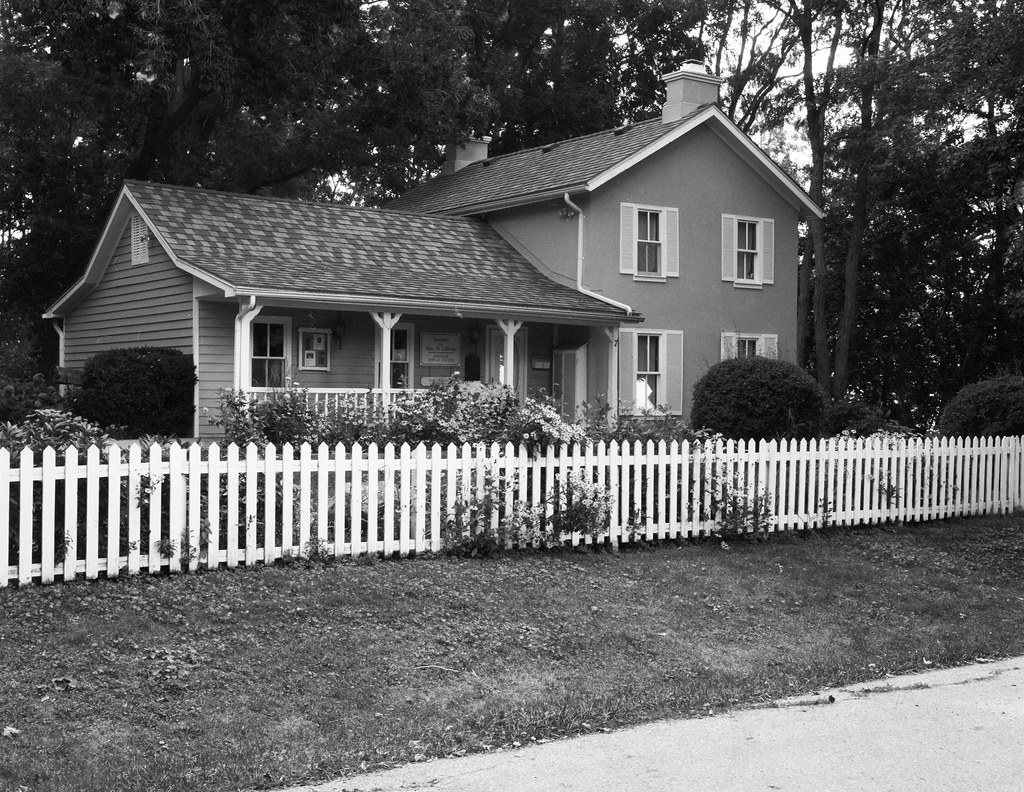If there were another urban centre in Trafalgar township that could rival Oakville and remain a fiercely independent community today, it would be Bronte. Located at the mouth of Twelve Mile Creek and a vibrant community tied to Lake Ontario, today, it is more an upscale suburb of Oakville but retains much of its character.

The land where Bronte grew up had the largest number of Indigenous Settlements dating back to the earliest signs of human settlement in the region. In 1805, most of the land was ceded to the Crown under Treaty 14. At the same time, the land around the creek mouth continued to be in the ownership of the Mississaugas. Phillip Sovereign arrived in 1814, purchasing a lot in Trafalgar Township and establishing a farm; other families, the Hixons, Nelsons and Belgas, soon joined the Sovereigns. The small farming settlement, known as The Twelve, began to grow, the creek provided water power for mills, and by 1815 even a tiny schoolhouse was constructed, Philip’s son serving as the first teacher. The signing of Treaty 22 in 1820 ceded the creek mouth and allowed the small settlement to grow in a meaningful fashion. The mouth provided a natural harbour, and the industry of stone hooking took shape allowing men to pull valuable building material from Lake Ontario to construct stone buildings. By the 1830s, a general store, inn and post office arrived, and the hamlet of Bronte was born; the name taken from one of Lord Nelson’s titles, Duke of Bronte, honour granted by the Kingdom of Sicily for his actions again Revolutionary France in the Battle of the Nile securing Sicily from French invasion. By 1850 a proper harbour with a lighthouse and shipyard had taken shape. Warehouses stored wheat, timber and fish. Soon the Great Western Railway ran through the town and built a station to serve Bronte. In addition to milling a fleet of twenty-two commercial fishing boats called Bronte Harbour home. Into the 20th Century, the construction of the Middle Road, which included an interchange with Highway 25, offered automobile access to the village, boasting several beach resorts for wealthy vacationers. But a storm in 1940 wiped the resorts and the fishing industry out of the village. While there were some efforts to bolster the recovery with the establishment of the oil and gas industry, it only helped a little. By 1962, Bronte was among those villages amalgamated into Oakville and the rest of the township. Today Bronte retains some of its historic charms. The harbour, rebuilt after the storm, is home to personal craft, and there are some of the historic buildings left standing, including one built in the 1840s using stone-hooked materials. Much of the village is occupied by high-end condo towers, but an active historical society is dedicated to preserving the past, including the Sovereign House.
While my original thought was to use the 1840 stone building as my subject, that isn’t easy to photograph because of street parking along that stretch of Bronte Road. Then I thought maybe the harbour, but again it was difficult to find a good line of sight with an exciting subject matter. So pulling up Google maps, I noticed near where I had parked a historic home, the Sovereign House. Eventually, I found out that it was not only the home of an early settler but also home to the historical society I made tracks. While the home was moved from its original location in 1988, it retains the same character from when it was built in 1825. Given the shaded area and gathering clouds, I metered for the area under the porch and underexposed by a stop. The house was the main subject, so I didn’t care to have details about the trees surrounding the building. And used the 150mm lens to isolate the subject while retaining some location context.